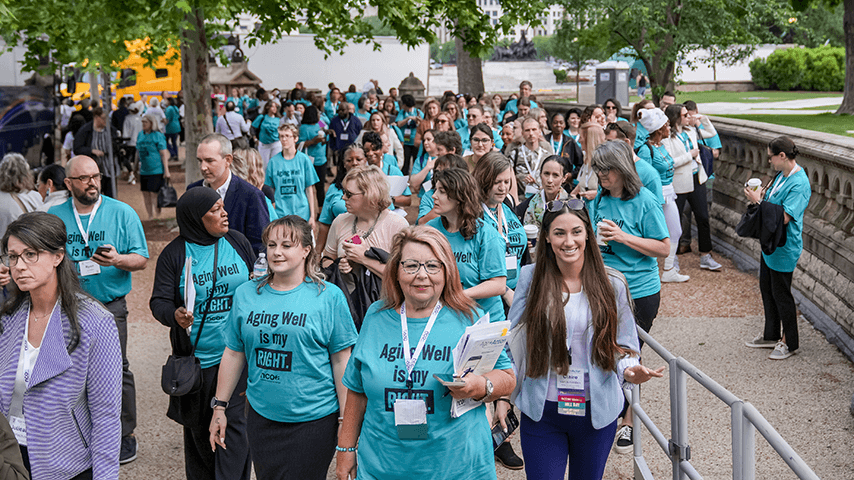
Related Topics
The Older Americans Act (OAA) specifically authorizes funding for the operation, “acquisition, alteration, or renovation of existing facilities” of multipurpose senior centers. Resources are also available for senior centers and other community organizations to deliver services such as meals, transportation, information and referral, health promotion and disease prevention, and caregiver support.
State and Area Plans determine how the OAA funding is used at the local level. To find out what’s available in your state, start a relationship with your Area Agency on Aging (AAA) or State Unit on Aging (SUA).
Older Americans Act funding for senior centers
Four major OAA Titles receive 93% of federal appropriations each year:
- Nutrition Services (Title III-C): This includes congregate and home-delivered meals to increase the health, functionality, and quality-of-life for millions of seniors. This Title receives the largest amount of appropriations.
- Supportive Services and Senior Centers (Title III-B): This includes services that enable older adults to remain in their own homes and age in place, rather than enter institutions. The most frequently provided services are home health, personal care, and transportation.
- National Family Caregiver Support Program (Title III-E): This includes services to help ease the burdens of caregivers, including respite care, counseling, and supplemental services.
- Senior Community Service Employment Program (Title V, SCSEP): SCSEP provides part-time employment and training for low-income workers, helping to lift them out of poverty and encourage a sense of self-worth, while strengthening communities through community service job placements.
Nutrition services
Under Title III-C, funding is available for congregate meals that serve:
- Individuals aged 60+ and their spouse regardless of age
- A limited number of individuals with disabilities under age 60 who live with an older adult or in a housing facility
- Volunteers who provide services during meal time
Some senior centers receive funding for this program directly, or they partner with agencies that provide the congregate meal program at their site, and the agency receives the funding.
Supportive services and senior centers
Title III-B funds, which helped to develop the infrastructure of SUAs and AAAs, collectively known as the “aging network,” have enabled AAAs to develop systems and programs to support local communities throughout the United States.
Title III-B directs state and area agencies to concentrate resources on fostering comprehensive and coordinated systems for providing supportive services and multipurpose senior centers.
Senior center examples
Some senior centers work through their aging network to run OAA-funded programs. Here are two examples:
- Palatine Township Senior Center in Palatine, Illinois, receives OAA dollars through AgeOptions for social, congregate, and home-delivered meals, and health promotion services. Through the OAA Social Services grant, the center receives support for Central Point of Entry (Illinois’ version of Information & Assistance), Senior Opportunities and Services, and Senior Center Operations.
- Rufty-Holmes Senior Center in Salisbury, North Carolina, received administrative responsibility for Information & Assistance, Congregate Nutrition, and Title V Senior Employment when the Rowan County Senior Services Department dissolved in 2011. The center also receives Senior Center Operations funding as part of OAA funding combined with the state’s Home Community Care Block Grant (HCCBG). In North Carolina, local county commissioners select the aging programs to be offered from a menu provided by the state. All services on the list can be funded with OAA/HCCBG funds.



